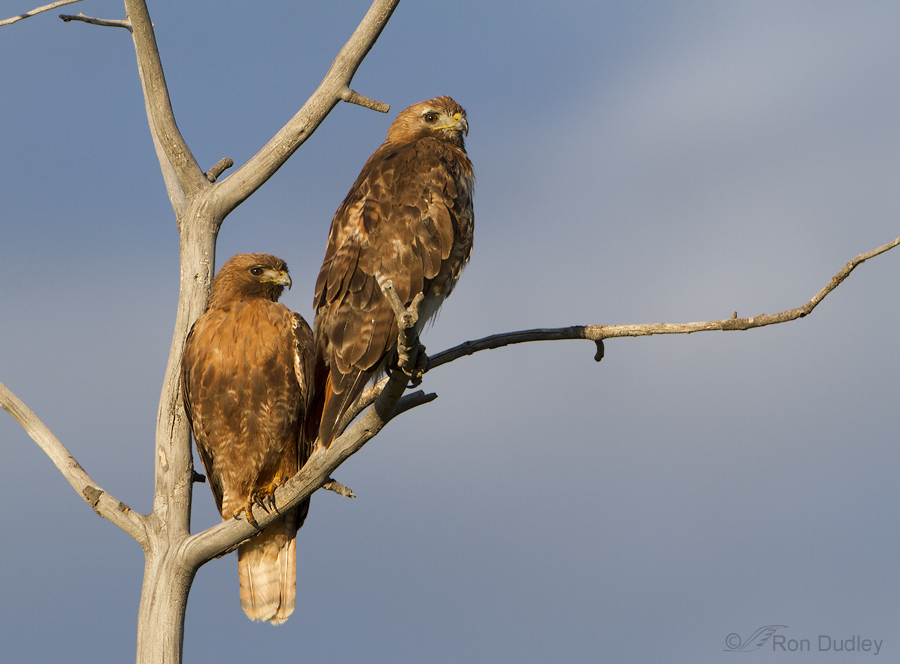Red-tailed Hawks – Creatures Of Habit

Last summer (these first two photos were taken July 22, 2012) I photographed this mated pair of Red-tailed Hawks in western Montana. On most mornings and some evenings I could almost count on finding them perched in the same old snag and even on the same branch of the dead tree.
Earlier this month on my first Montana camping trip I found the same mated pair on the same perch (male at bottom, female up top).

